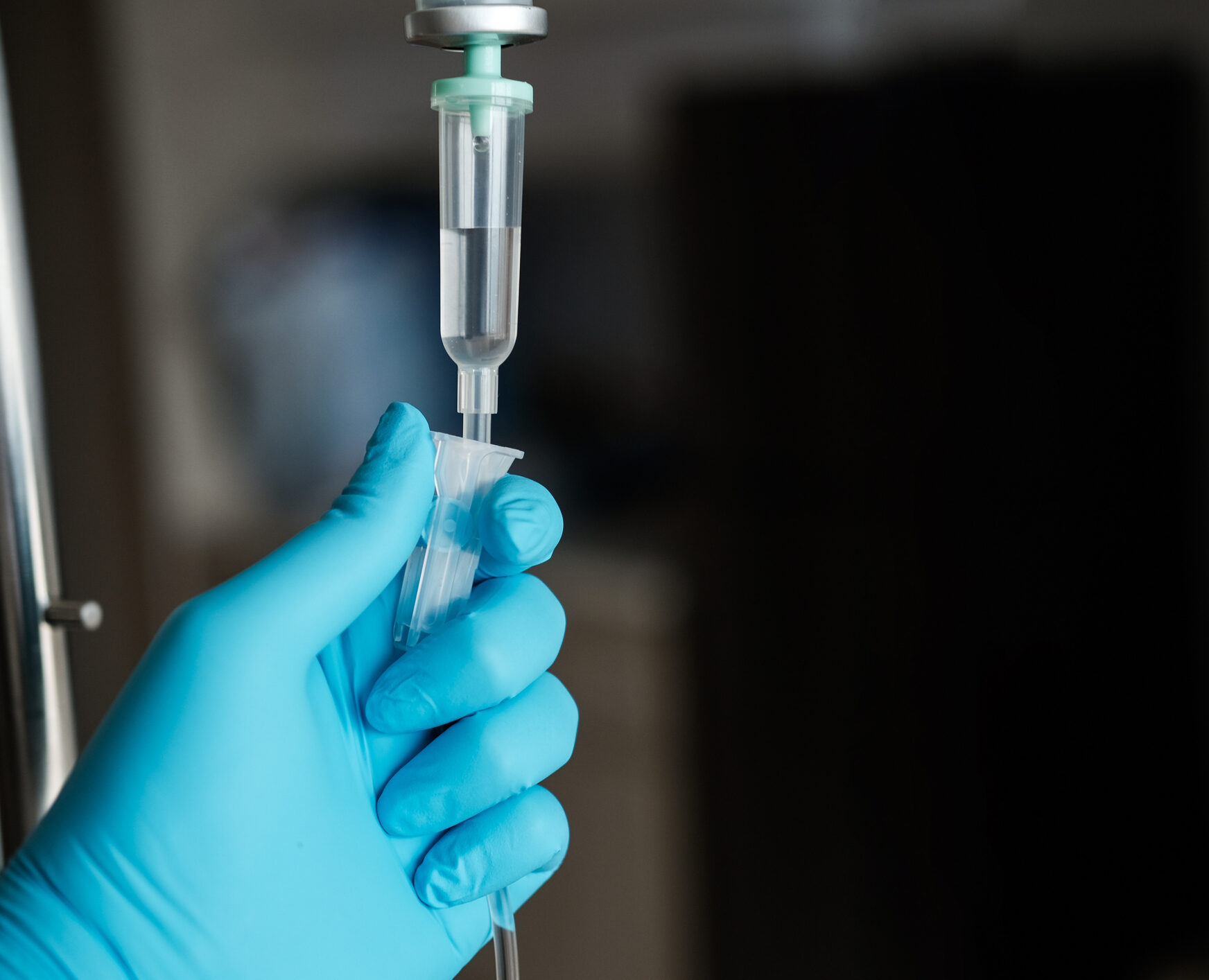Neoadjuvant camrelizumab in combination with either platinum-doublet chemotherapy or apatinib has demonstrated efficacy in patients with stage II-III non-small cell lung cancer (NSCLC), according to researchers.
These results, from a phase 2 trial (ClinicalTrials.gov Identifier: NCT04379739), were presented in a poster at the 2023 World Conference on Lung Cancer.
The trial, which was conducted at 6 sites in China, enrolled 89 patients with resectable or potentially resectable stage II-III NSCLC who did not have EGFR or ALK alterations.
For neoadjuvant therapy, patients received camrelizumab (200 mg on day 1) in combination with either platinum-doublet chemotherapy or apatinib (250 mg once daily) every 3 weeks for 2-4 cycles. Patients in the apatinib arm had to have PD-L1-positive tumors, no obvious bleeding tendency, and no uncontrolled hypertension.
Of the 58 patients in the chemotherapy arm, 28 had resectable disease. Of the 31 patients in the apatinib arm, 10 had resectable disease. The primary endpoint was major pathologic response (MPR) rate.
Results in the Chemotherapy Arm
In the chemotherapy arm, the MPR rate was 31.8% among patients with resectable disease and 20.0% among those with potentially resectable disease. The pathologic complete response (pCR) rate was 22.7% in the resectable group and 20.0% in the potentially resectable group. The radiographic objective response rate (ORR) was 81.8% and 33.3%, respectively.
The proportion of patients who underwent surgery was 78.6% of those with resectable disease (22/28) and 50.0% of those with potentially resectable disease (15/30). The rate of R0 resection was 95.5% and 100%, respectively.
The rate of grade 3 or higher adverse events (AEs) related to camrelizumab and chemotherapy was 25.9%. The most common of these AEs were neutrophil count decrease (13.8%) and anemia (6.9%).
Results in the Apatinib Arm
In the apatinib arm, the MPR rate was 66.7% among patients with resectable disease and 55.6% among those with potentially resectable disease. The pCR rate was 11.1% in the resectable group and 11.1% in the potentially resectable group. The radiographic ORR was 77.8% and 55.6%, respectively.
The proportion of patients who underwent surgery was 90.0% of those with resectable disease (9/10) and 42.9% of those with potentially resectable disease (9/21). All patients who underwent surgery in this arm had R0 resections.
The rate of grade 3 or higher AEs related to camrelizumab and apatinib was 12.9%. These AEs included alanine aminotransferase increase (6.5%), aspartate aminotransferase increase (3.2%), blood bilirubin increase (3.2%), and hypertension (3.2%).
“Neoadjuvant camrelizumab plus platinum-doublet chemotherapy or apatinib shows promising pathological response and manageable toxicity in patients with stage II-III NSCLC,” the researchers wrote in their poster.
Disclosures: No disclosures were provided.
Reference
Jiang G, Zhang P, Li Q, et al. Phase 2 trial of neoadjuvant camrelizumab plus chemotherapy or apatinib for resectable or potentially resectable NSCLC. Presented at WCLC 2023. September 9-12, 2023. Abstract P1.25-11.
This article originally appeared on Cancer Therapy Advisor
